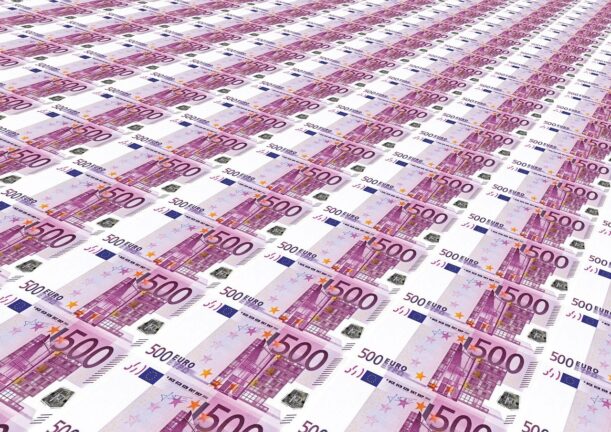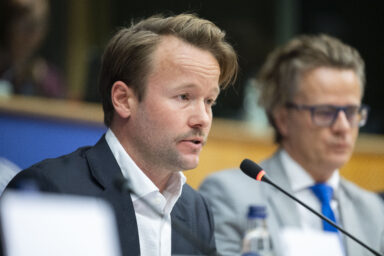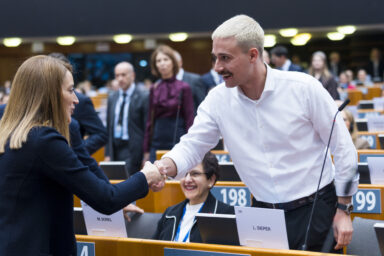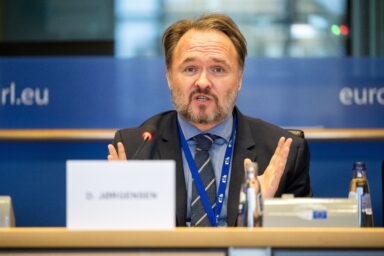The EU is reportedly closer than ever to approving a €140bn interest‑free loan for Ukraine. The controversy is that the loan is to be backed by frozen Russian central‑bank assets. Under the plan, the assets themselves wouldn’t be spent — but would act as collateral on the assumption that Russia would have to pay reparations once the war ended. It’s a legal and financial workaround allowing Ukraine to use the money now to sustain its military defence. A kind of sleight of hand: using frozen money without unfreezing a cent.
Desperate times call for, well, creative measures. Although Europe, the United States and other allies have provided Ukraine with substantial financial aid over the last three‑and‑a‑half years — grants, loans and military support — it’s still not enough. Estimates gauge that Kyiv needs to unlock an additional €50bn as 2025 wraps into 2026. The plan to leverage frozen Russian central‑bank assets could free up tens of billions of euros to help and keep Ukraine’s valiant defences alive. But while this financial workaround could be a game‑changer, at the same time it has raised important legal and economic questions and it’s not that long ago that some who were nervous about the idea, like Germany, did an about‑face.
In an op ed for the Financial Times, Germany’s Chancellor Friedrich Merz wrote that Europe had to “systematically and massively raise the costs of Russia’s aggression”. How? By making those same funds “available for the defence of Ukraine”.
But questions remain.
You might be interested
Legality and market risks
The plan treads on delicate legal ground. Using frozen assets as collateral rather than confiscating the funds outright attempts to skirt around international law that prohibits outright seizure of another country’s sovereign assets without due process. Yet some EU governments are jittery this could be challenged in courts or viewed as confiscation in disguise. Moreover, the European Commission is considering a rarely used EU‑Treaty clause to prevent individual member states from vetoing the renewal of sanctions that keep the assets frozen — shifting from unanimous to majority voting. That move alone is controversial and could face push‑back inside the bloc, not least from countries like Hungary or Slovakia.
There’s also concern about how such a scheme might ripple through financial markets. The frozen Russian assets are mostly held in Euroclear, a key clearing‑house in Brussels. As such they form part of the broader European financial ecosystem. If creditors or Russia challenge the arrangement legally, it could unsettle confidence in the safety of sovereign assets frozen in Europe.
Belgium, where the bulk of these assets are held, has called for firm guarantees to ensure it won’t bear disproportionate legal or financial fallout if the plan collapses. It is expected that Russia would have to pay reparations for the war it itself unleashed against a sovereign neighbour. But would it? What if it refused? Would the loan be forgiven or the frozen funds seized only then to cover the loan?
White space on the map
This type of arrangement is unprecedented at this scale. While countries have frozen and even confiscated assets in the past — usually after conflicts or sanctions — the idea of using them as collateral for a massive loan to a country at war, without unfreezing the principal, is novel. It reflects the desperate and innovative measures governments are willing to consider in response to Russia’s invasion. Poland’s Foreign Minister Radosław Sikorski has been quoted by The Guardian as saying last week that “the issue of the use, on behalf of the victim of aggression, of the frozen Russian assets is heading towards a happy resolution”, adding that a deal could be reached by the end of the year.
If it all falls flat
Certainly, the failure to secure the loan could already have serious consequences. Without fresh funds, Ukraine risks running out of resources to sustain its defence, potentially weakening its position against Russian forces. Despite the recent and rapid SAFE instrument implementation — that is on the starting line and could in no way fill the gap jointly or independently in time. The fallout would not only affect Ukraine’s survival but also Europe’s strategic defence in the future.
In short, this €140bn loan represents a bold, innovative financial gamble born of necessity. It’s a signal of Europe’s commitment to Ukraine but comes with complex legal, economic and political risks.
Shadow overhead
Looming over developments is a promised second summit between US President Donald Trump and Russia’s leader Vladimir Putin being held in Budapest. The irony of the meeting is clear: Viktor Orbán is considered an ally of both. It was in Budapest in 1994 that the Budapest Memorandum was signed agreeing Ukraine’s sovereignty – borders that Russia has violated since. Finally, Hungary is possibly the only EU country where Mr Putin can travel freely without facing immediate arrest. On Monday, Ukrainian President Volodymyr Zelenskyy rebuffed by Washington last week in asking for long-range Tomahawk missiles, said he would be willing to take part either in tripartite talks or shuttle diplomacy in Hungary – if invited. Once again, the ground has shifted with Mr Trump again leaning towards the Kremlin on Sunday, suggesting that much of the Donbas region Mr Putin is gunning for, could be “cut up”, news sources said.











